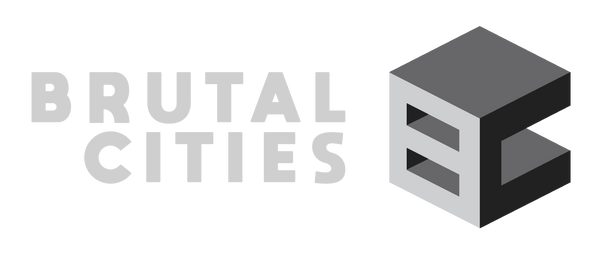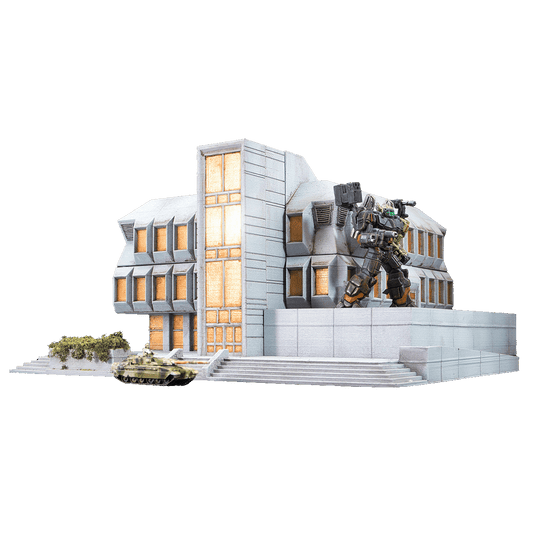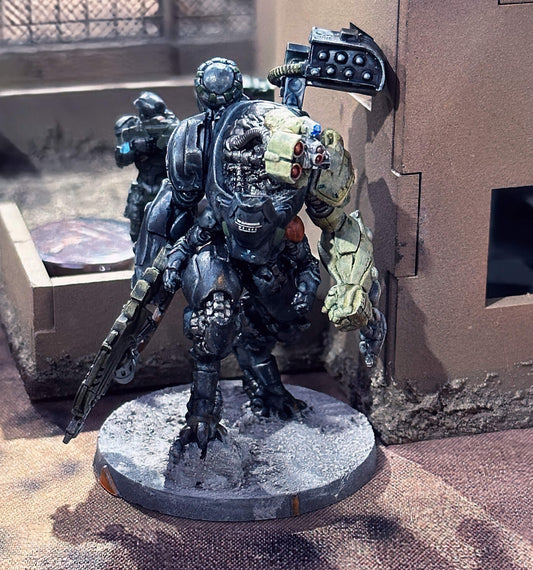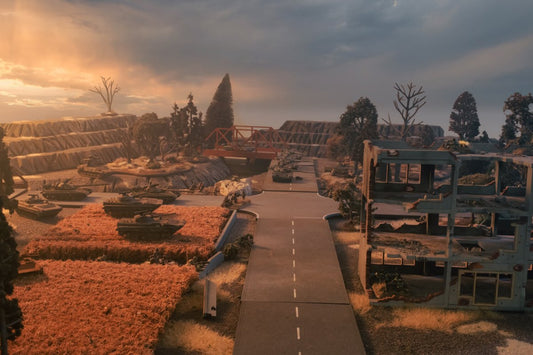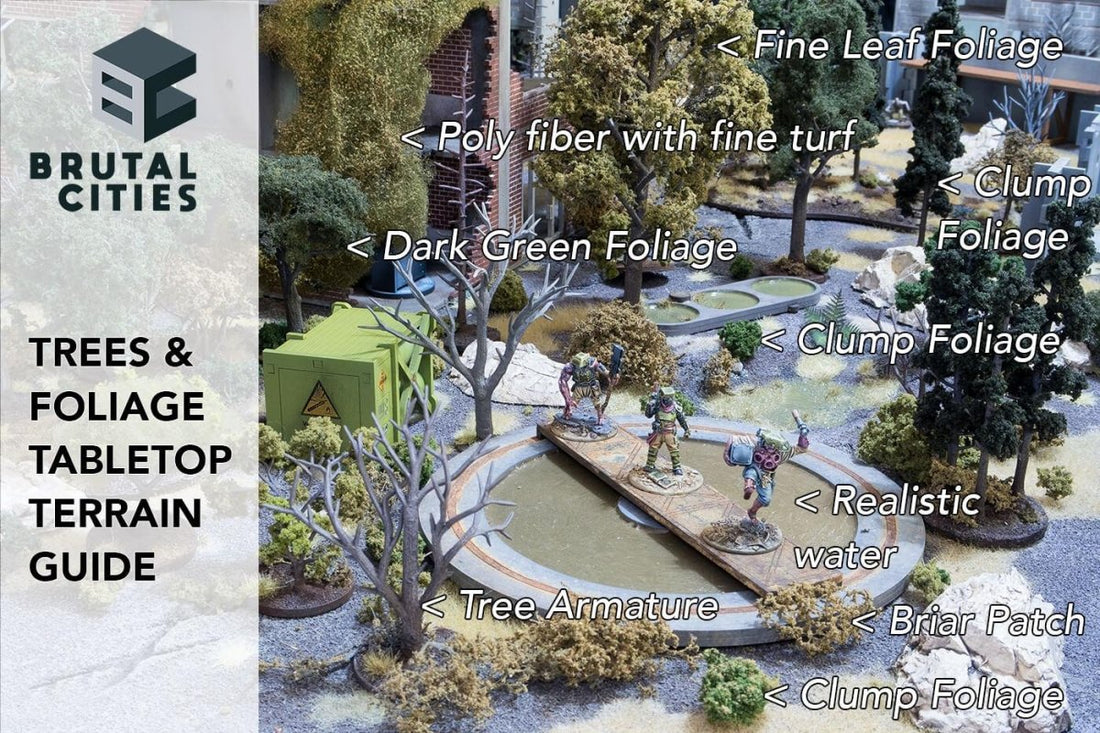
Woodland Scenics Tabletop Terrain Trees & Foliage Guide
Ryan JShare
Introduction
Hey all, Ryan here.
As I have been getting into Zona Alfa, I needed more varied and natural scenery options. So I've now spent a bit of time researching and working on natural terrain and model trees for the Brutal Cities studio terrain. I've written this article to make it easier for anyone who is interested in adding natural terrain to your tabletop collection.
Even if you're more interested in urban terrain, bringing some natural elements into the city can be a good way to bring additional terrain rules into your gameplay.
And - if you haven't realised, brutalism and plants go pretty well together!
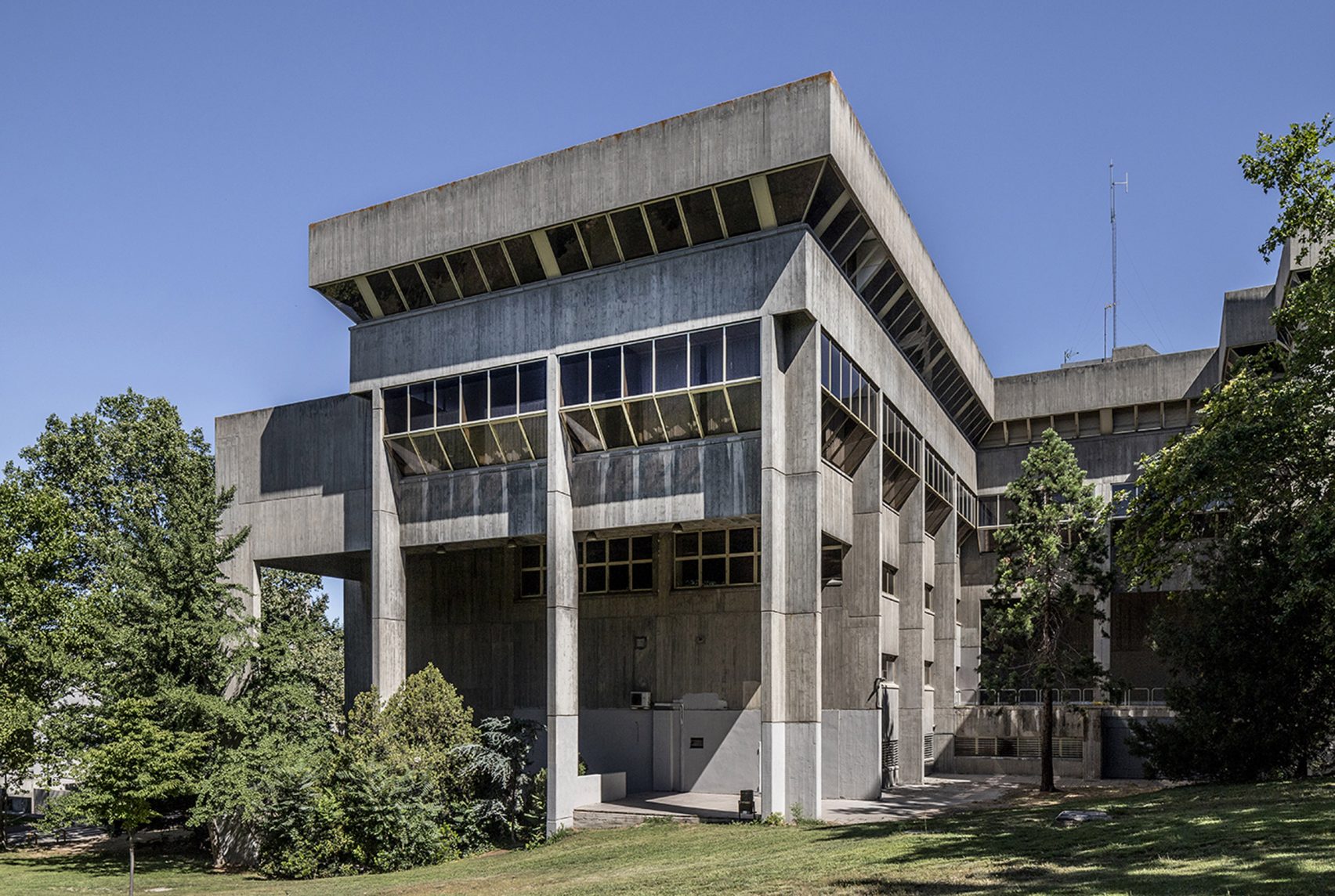
Department of Information Sciences from 1971, Madrid. Photo By Roberto Conte. Taken from Dezeen
While I was researching and making the terrain, I thought that Brutal Cities customers may find it convenient to grab some natural scenery products while getting their MDF hobby fix. So after testing the products myself, we now stock a bunch of scenery products!
So if you haven't used Woodland Scenics before, this is the quick guide for you!
Tabletop Terrain Hobby Philosophy
The Brutal Cities hobby philosophy is basically minimizing time and effort while maximising results. When designing and using tabletop terrain I want to -
- Make it easy (simple techniques for painting, simple but effective designs)
- Make it fun (it’s a hobby after all!)
- Make it quick (speed)
- Make it affordable (cost)
- Make it look good (aesthetics)
This knowledge was gained from looking around on Youtube, reading on various blogs and forum posts, and trying the products out for myself.
Terrain Glue and Adhesives:
Super glue for gluing the armatures to the MDF bases, and gluing the fine leaf foliage to the armature branches.
Scenic glue (like a PVA but with the massive benefit of being non-glossy) to fix the clump foliage and bushes to the bases.
Scenic cement to seal the layers of foliage and flock to the base and trees.
Woodland Scenics Hob-E-Tac : an ultra tacky type of glue, that stays sticky. It is very easy to glue all types of foliage to the tree armatures with this, although superglue is probably more durable for the fine leaf foliage.
Tabletop Terrain Tree Armatures
After looking around at all sorts of model tree scenery products, I found these great flexible plastic kits - a durable tree armature. Basically, it’s a plastic tree that you can easily twist and turn into the sort of tree you’d like, then you can add foliage to them (or not) to match your wargaming tables. It's very durable and has decent realistic bark textures.
There are a variety of sizes in both pine and deciduous forms.
To work on the armatures you'll need your:
Scalpel to clean mould lines from the tree armatures (doesn't take too long but is worth it for the realism)
Hobby clippers to cut the trunk from the trees.




Natural Foliage Scenery
After you prepare your tree armatures, and paint them you'll want to add foliage. There are many different methods or products you can use to make foliage for the tree armatures, or bushes for basing or areas of difficult terrain.
To help you decide which you foliage product you want to use, I’ll rank them out of 5 for:
Ease, Speed, Cost and Aesthetic
I will not rate durability, as it seems that Luke from Geek Gaming Scenics shows that if you want you can make even the seemingly more fragile products like fine leaf foliage indestructible! Trust in your glue and apply layers of matte varnish or scenic cement.
Woodland Scenics Fine Leaf Tree Foliage
What is it?
It appears to be be Seafoam (which is basically impossible to get in Australia, from my research) that has been flocked different colours. Love this product, it looks so realistic right out of the bag.



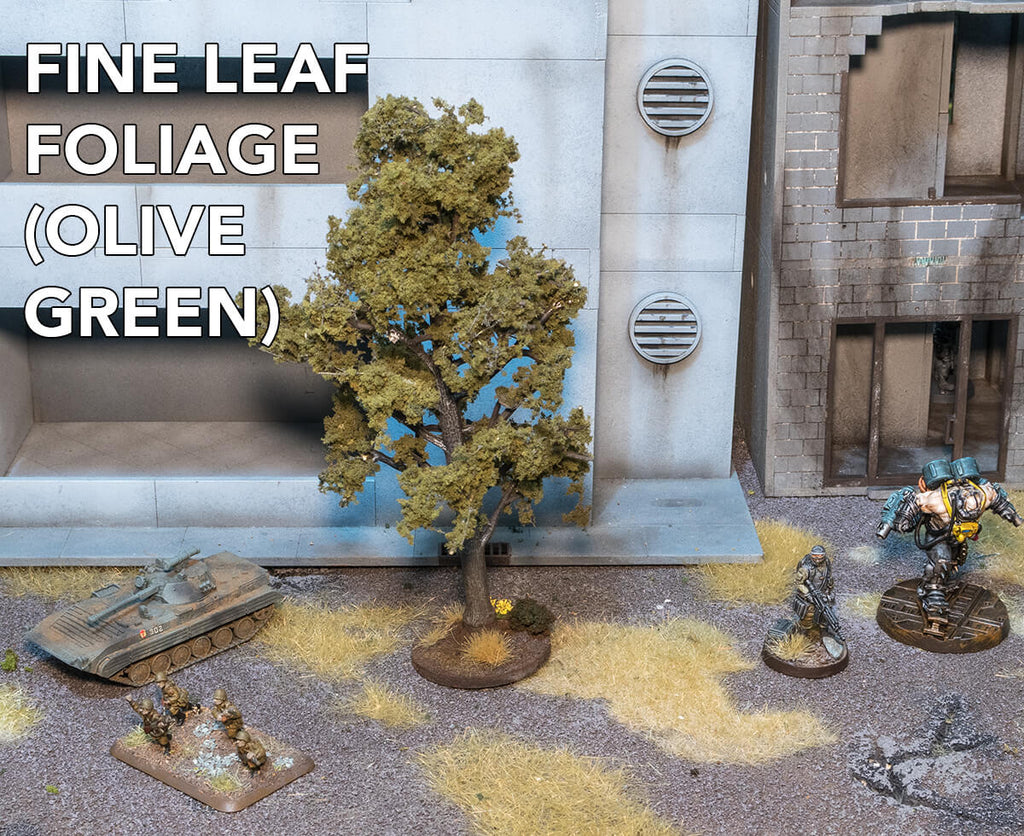
Ease: 3/5
I tried gluing with both Hob-e-Tak and superglue. Both worked. Easy enough albeit slightly more fiddly than other methods here - it’s easy to get glue on your fingers too. Superglue is probably safest for more durable trees. Then apply scenic cement to seal it.
This was relaxing and rewarding to do - particularly because the result looks so good! Big fan.
Speed: 2/5
More time consuming than most methods as you must glue them on piece by piece carefully. Easy to do when watching a show though!
Cost: 2/5
Probably the most expensive foliage product to use other than tabletop ready trees (but those often come in small boxes and depending on how much foliage you apply, you can make a box of this go a long way.). You get what you pay for with these which bring us to
Aesthetics: 5/5
Worth it! It looks almost perfect straight from the box. For the photo shoot there was no additional work done to the trees that used these products. If you want to take it to the next level, it is easy to improve on them further with highlights and fixing of additional flock/turf.
Woodland Scenics Clump Foliage
What is it?
Foam clumps in different colours emulating foliage. Different greens, and even Autumn colours are available! This is a very commonly used type of product. If you need to, you can break the pieces down into smaller bits.




Ease: 4/5
Simply glue the armatures with Hob-E-Tac, PVA or Scenic Glue. Slightly less easy than say, polyfibre, as it can come off. Make sure to apply pressure. I found the Hob-E-Tac was the best glue for this. PVA or the Scenic Glue didn't work as well. And it's too absorptive for super glue, being foam.
Speed: 3/5
Average - kind of manual to add it to each branch, carefully squeezing them.
Cost: 4/5
Very affordable for doing a large amount of foliage.
Aesthetics: 2/5 OR 3/5
By itself, I rate it 1. It doesn't look convincing to me.
HOWEVER, if you then apply other products such as the Woodland Scenics Earth Blend Fine Turf (Bag), basically a type of fine, foam flock) then it’s perfectly serviceable as great gaming scenery!
Woodland Scenics Polyfibre

What is it?
Synthetic green fibres. You can stretch it out over the armatures as a base for adding flock/fine turf, or clump foliage.
Ease: 5/5
Simply glue the armatures with Hob-E-Tac, PVA or Scenic Glue. Then stretch the polyfibre to the desired density/style of tree.
Speed: 4/5
Very fast - loses a point to the foliage that already has flock and texture on it.
Cost: 5/5
Cheapest method I think.
Aesthetics: 1/5 OR 3/5
By itself, I rate it 1. It doesn't look convincing to me.
HOWEVER, if you then apply other products such as the Woodland Scenics Earth Blend Fine Turf (Bag) (Basically a type of fine, foam flock) then it’s perfectly serviceable as great gaming scenery!

Woodland Scenics Foliage

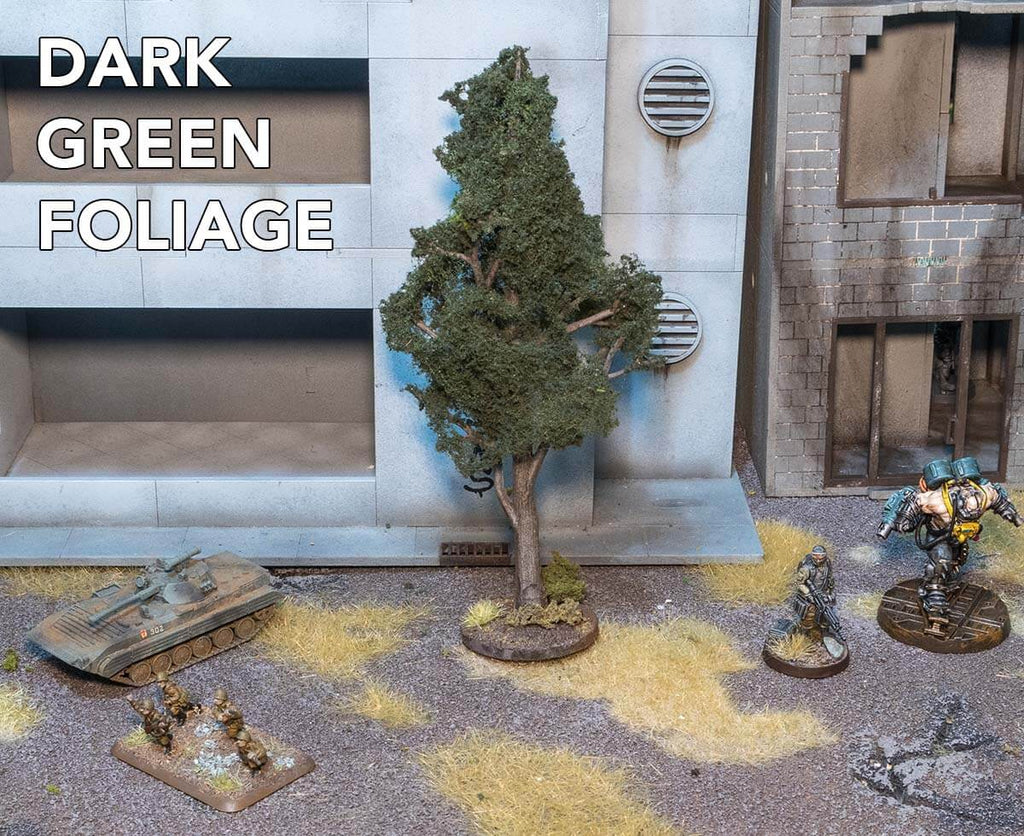

What is it?
It seems to be like the polyfibre, but with the benefit of having a more 3d and realistic look, as it has already been flocked. It appears some turf or fine foam foliage has been applied. This makes faster than polyfibre. It can be applied to tree armatures, or can be used to make underbrush, vines, bushy patches and more. It would be great to cut up and apply to abandoned ruins I think.

Ease: 5/5
Simply glue the armatures with Hob-E-Tac, PVA or Scenic Glue. Then stretch the polyfibre to the desired density/style of tree.
Speed: 5/5
Very fast - probably the fastest method to apply foliage to the tree armatures.
Cost: 3/5
Quite affordable, but not as cheap as the polyfibre.
Aesthetics: 4/5
I think it looks pretty good straight from the bag, but not as good as the fine leaf foliage. With any of these products, if you are after realism, I think using a combination of these can give your terrain more diversity. Just as not all trees in nature have the same leafs.
It will look even better if you then apply other products such as the Woodland Scenics Earth Blend Fine Turf (Bag)
Flock, Static Grass & Basing Scenery Products
As a hobbyist with a background in wargaming, rather than model trains, some of the terminology was confusing to me. The classic sawdust based green basing material that Games Workshop used to sell is what I thought of as flock.
Fine Turf = Scenery Flock
Woodland Scenics call their flocking products fine turf. It's a finely ground foam flock, that can be used to model moss, grass and provide highlights to foliage and bushes. There are several colours to choose from.

The Earth Blend Fine Turf has been used to flock the polyfibre in this image. I think it looks pretty convincing as dry leaves.
Flock = Static Grass
The classic nylon fibre grass that stand up when statically charged.
Woodland Scenics calls these products flock or static grass.

Modelling briar patches and smaller bushes
If you want to model bushes and other smaller foliage for scatter terrain, or to fill out some forest terrain bases you can choose between:
Briar Patch
These are like the very realistic fine leaf foliage. This way the best bush product I could find when working on this table.

Briar Patches will help make your games even more immersive!

Briar patches have been used here to create realistic bushes for the tabletop.
Lichen
Lichen is another classic product you have probably seen on the table. They are an easy way to add variation to the underbrush on your table.

Clump Foliage
Clump Foliage is an easy way to add groundcover and bushes to your terrain and bases. Especially when combined with some flock/turf, and sealed with scenic cement.
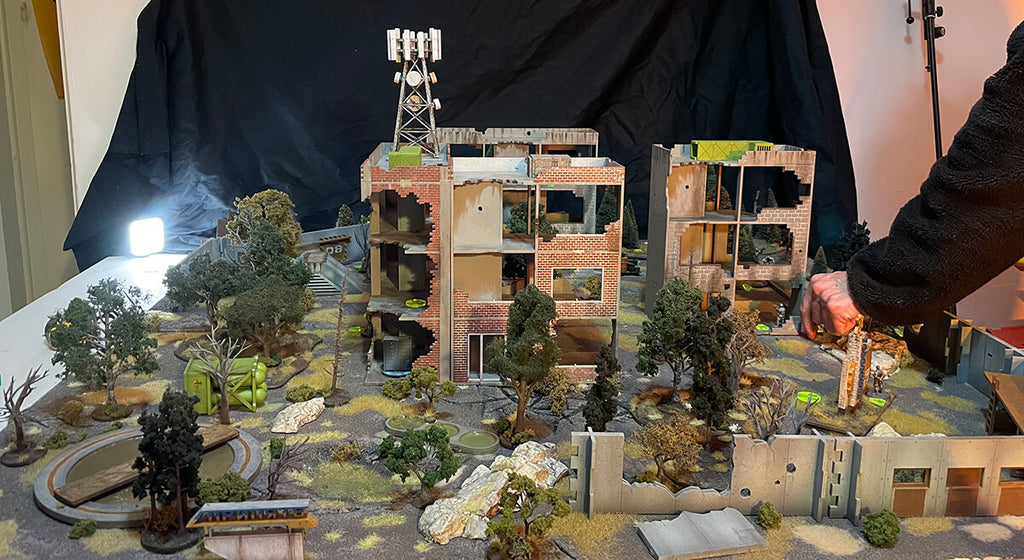
The new terrain and Woodland Sccenics range shown in this recent game
Conclusion
I hope you found this guide useful for understanding the products. It was a lot of fun trying something new in the terrain side of the hobby.
I'll do another article soon about the water products and the rocks seen in the recent photos.
Thanks for reading!
PS. The Ukraine Fundraiser is still going and we've raised over $1000 through the se Chernobyl/Pripyat signs here.

